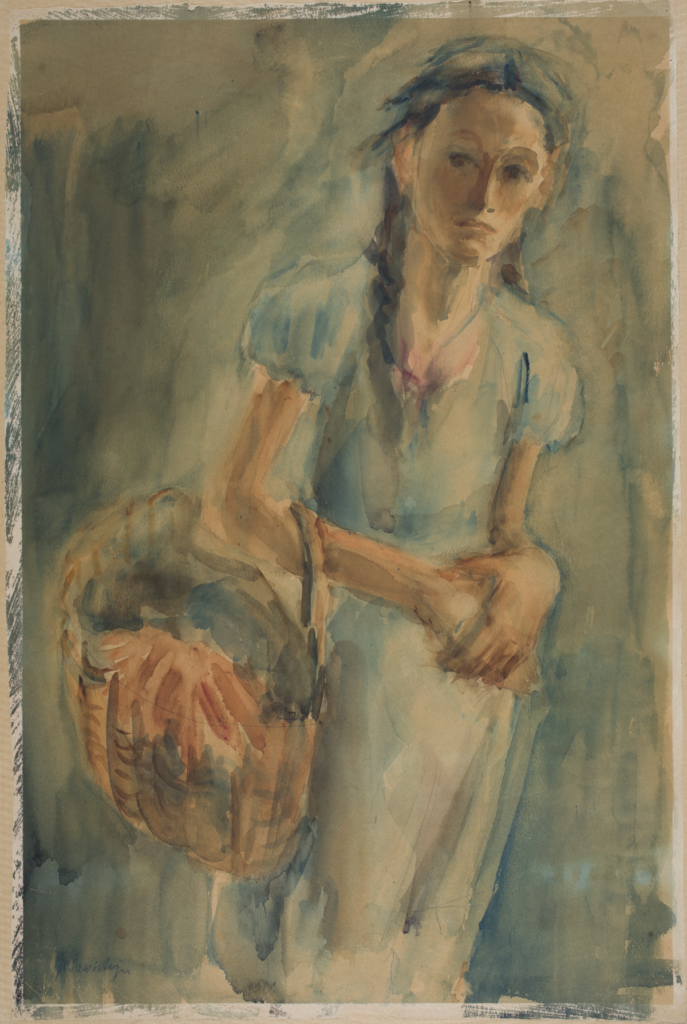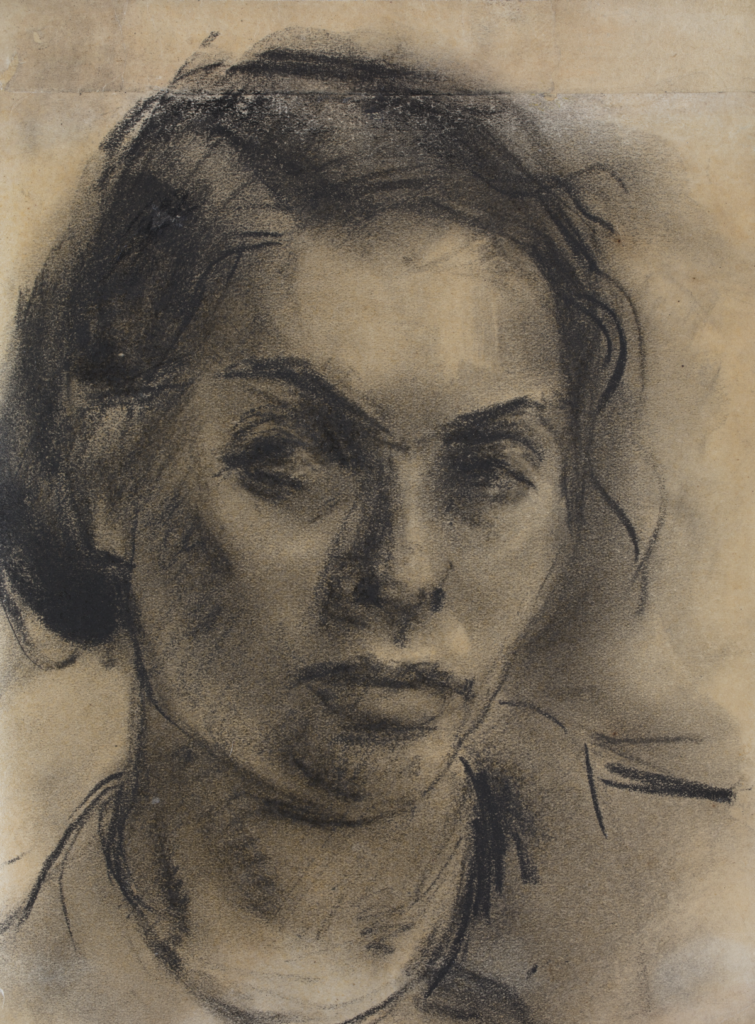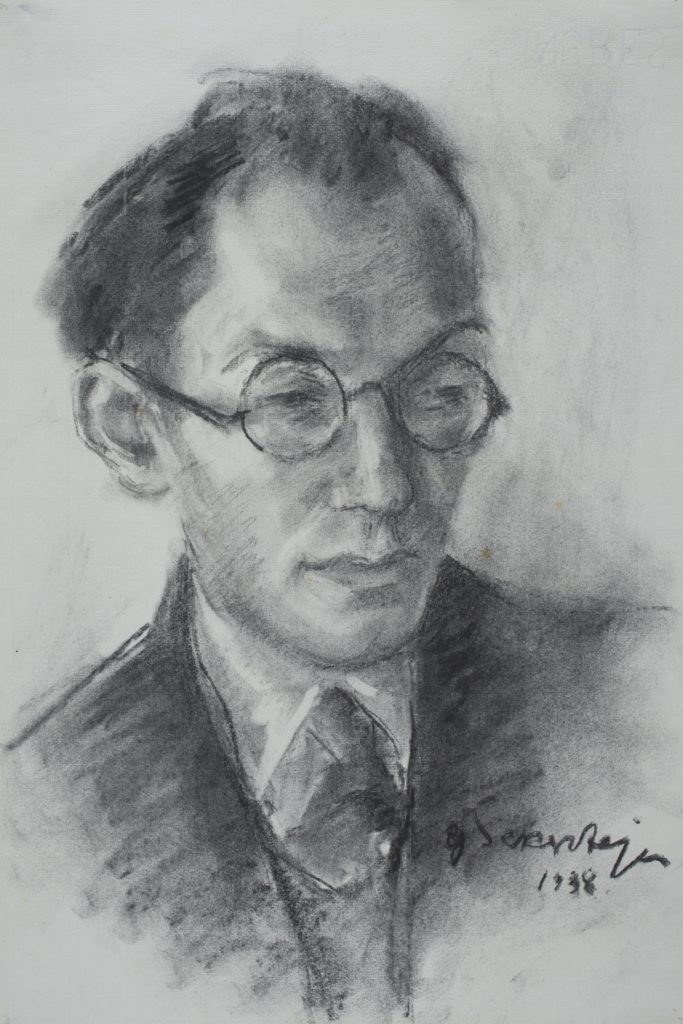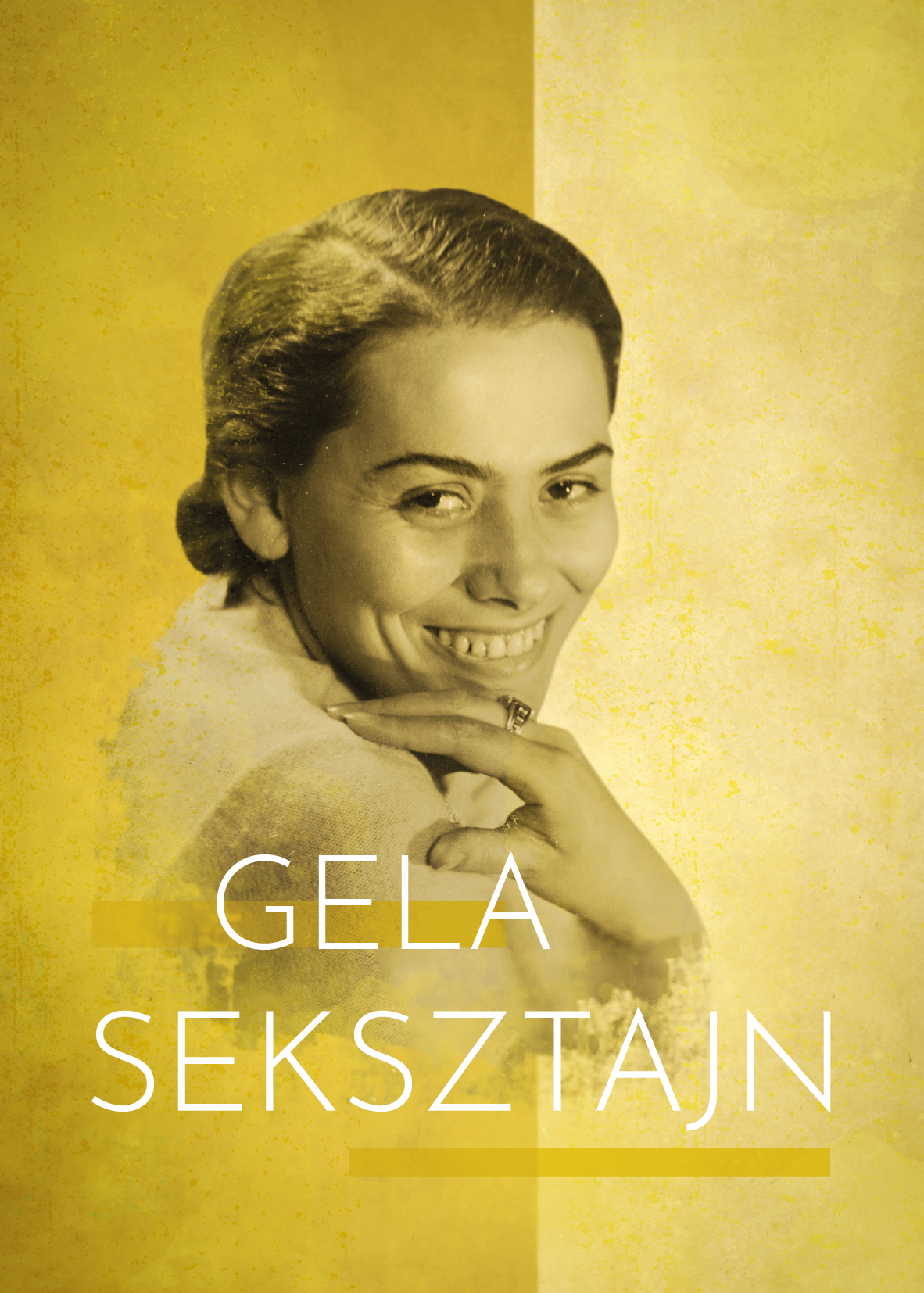1907, Warsaw – IV 1943, Warsaw Ghetto
Biography
Gela Seksztajn was a painter and drawing teacher. Together with her husband, Izrael Lichtensztajn, she participated in the cultural life of the Warsaw Ghetto and the activities of the Jewish Social Self-Help organisation. Gela’s artistic legacy has been preserved in the Ringelblum Archive, the Underground Archive of the Warsaw Ghetto. Her works (over 300 watercolours and drawings) stand out from the majority of the archive’s mostly text-based records.
Gela Seksztajn was born in 1907, in a working-class household. Her mother (born Landau) came from intelligentsia, but because she was physically disabled, and given the time, she had to marry down and enter a union with a cobbler. The mother died in 1918.
The family’s poor financial situation, meant that Gela had to start earning money for her own upkeep at a fairly young age. She completed a tailoring course offered by the Organisation for the Development of Industrial, Craft and Agricultural Work and made a living by sewing.
She discovered her love for painting as a child and her talent was recognized as early as her school days. Unfortunately, initially, her difficult circumstances did not allow her to develop her skills through any formal training. Nevertheless, Gela Seksztajn learned to paint and practiced her craft. She was affiliated with the Association of Jewish Writers and Journalists. Supported by such writers and artists as Israel Yehoshua Singer, Jonas Turkow and Henryk Kuna, she received a scholarship and went to Kraków, where she studied under Professor Wojciech Weiss at the Academy of Fine Arts. Her paintings were showcased at exhibitions organized by the Jewish Society for the Propagation of Fine Arts and the Society of Jewish Visual Artists in Poland. She returned to Warsaw in 1937, and a year later, married Izrael Lichtensztajn – a teacher, journalist and activist of the Poale Zion Left party. Gela Seksztajn taught drawing and handicrafts in Jewish schools. She painted numerous portraits, of adults and children alike. She mostly used watercolour, but also drew with crayons, pencils, and ink.
In 1940, Gela and Izrael were forced to move to the ghetto. Their daughter, Margolit, was born shortly after. Both she and her husband participated in the cultural life of the ghetto and the activities of the Jewish Social Self-Help organization. Gela worked as a teacher, helped organize exhibitions of children’s works, and sewed costumes for theatre performances. The whole family, Gela, Izrael and Margolit, were most likely killed at the beginning of the ghetto uprising, in April 1943. Their memory survives in the documents collected by members of the underground organization “Oneg Shabbat”, which form the Ringelblum Archive, named after its creator, Emanuel Ringelblum. Izrael was one of Ringelblum’s close collaborators. Gela Seksztajn’s artistic legacy has been preserved in the Ringelblum Archive, with her works (over 300 watercolours and drawings) standing out from the majority of the archive’s mostly text-based records.
Sources:
Archiwum Ringelbluma. Życie i twórczość Geli Seksztajn, vol. 4, eds. Magdalena Tarnowska, Warsaw 2011, https://cbj.jhi.pl/documents/733243/0/ (3 February 2023).
Leociak Jacek, Biografie ulic. O żydowskich ulicach Warszawy: od narodzin po Zagładę, Warsaw 2017.
Libicka Monika, Gela. Skarb z Archiwum Ringelbluma, Warsaw 2021.
Majchrowska Anna, Z każdego dziecka wyczarować piękno, https://www.jhi.pl/artykuly/z-kazdego-dziecka-wyczarowac-piekno,497 (3 February 2023).
Virtual Shtetl, https://sztetl.org.pl/pl/biogramy/5924-seksztajn-gela (3 February 2023).
Gela Seksztajn was a painter and drawing teacher. Together with her husband, Izrael Lichtensztajn, she participated in the cultural life of the Warsaw Ghetto and the activities of the Jewish Social Self-Help organisation. Gela’s artistic legacy has been preserved in the Ringelblum Archive, the Underground Archive of the Warsaw Ghetto. Her works (over 300 watercolours and drawings) stand out from the majority of the archive’s mostly text-based records.
Gela Seksztajn was born in 1907, in a working-class household. Her mother (born Landau) came from intelligentsia, but because she was physically disabled, and given the time, she had to marry down and enter a union with a cobbler. The mother died in 1918. The family’s poor financial situation, meant that Gela had to start earning money for her own upkeep at a fairly young age. She completed a tailoring course offered by the Organisation for the Development of Industrial, Craft and Agricultural Work and made a living by sewing.
She discovered her love for painting as a child and her talent was recognized as early as her school days. Unfortunately, initially, her difficult circumstances did not allow her to develop her skills through any formal training. Nevertheless, Gela Seksztajn learned to paint and practiced her craft. She was affiliated with the Association of Jewish Writers and Journalists. Supported by such writers and artists as Israel Yehoshua Singer, Jonas Turkow and Henryk Kuna, she received a scholarship and went to Kraków, where she studied under Professor Wojciech Weiss at the Academy of Fine Arts. Her paintings were showcased at exhibitions organized by the Jewish Society for the Propagation of Fine Arts and the Society of Jewish Visual Artists in Poland. She returned to Warsaw in 1937, and a year later, married Izrael Lichtensztajn – a teacher, journalist and activist of the Poale Zion Left party. Gela Seksztajn taught drawing and handicrafts in Jewish schools. She painted numerous portraits, of adults and children alike. She mostly used watercolour, but also drew with crayons, pencils, and ink.
In 1940, Gela and Izrael were forced to move to the ghetto. Their daughter, Margolit, was born shortly after. Both she and her husband participated in the cultural life of the ghetto and the activities of the Jewish Social Self-Help organization. Gela worked as a teacher, helped organize exhibitions of children’s works, and sewed costumes for theatre performances. The whole family, Gela, Izrael and Margolit, were most likely killed at the beginning of the ghetto uprising, in April 1943. Their memory survives in the documents collected by members of the underground organization “Oneg Shabbat”, which form the Ringelblum Archive, named after its creator, Emanuel Ringelblum. Izrael was one of Ringelblum’s close collaborators. Gela Seksztajn’s artistic legacy has been preserved in the Ringelblum Archive, with her works (over 300 watercolours and drawings) standing out from the majority of the archive’s mostly text-based records.
Sources:
Archiwum Ringelbluma. Życie i twórczość Geli Seksztajn, vol. 4, eds. Magdalena Tarnowska, Warsaw 2011, https://cbj.jhi.pl/documents/733243/0/ (3 February 2023).
Leociak Jacek, Biografie ulic. O żydowskich ulicach Warszawy: od narodzin po Zagładę, Warsaw 2017.
Libicka Monika, Gela. Skarb z Archiwum Ringelbluma, Warsaw 2021.
Majchrowska Anna, Z każdego dziecka wyczarować piękno, https://www.jhi.pl/artykuly/z-kazdego-dziecka-wyczarowac-piekno,497 (3 February 2023).
Virtual Shtetl, https://sztetl.org.pl/pl/biogramy/5924-seksztajn-gela (3 February 2023).

Gela Seksztajn, MŻIH A-34 ARG I 1457, ze zbiorów Żydowskiego Instytutu Historycznego im. Emanuela Ringelbluma

Gela Seksztajn, MŻIH A-891 ARG I 1457, ze zbiorów Żydowskiego Instytutu Historycznego im. Emanuela Ringelbluma

Gela Seksztajn, MŻIH A-948 ARG I 1457, ze zbiorów Żydowskiego Instytutu Historycznego im. Emanuela Ringelbluma

